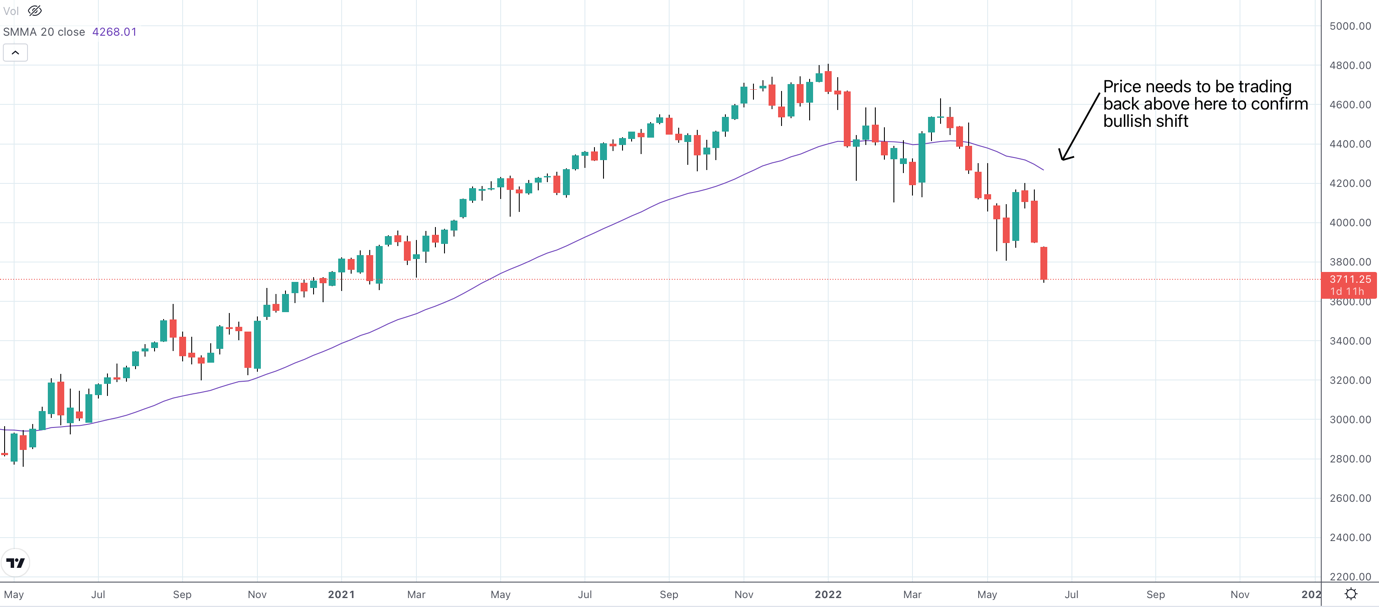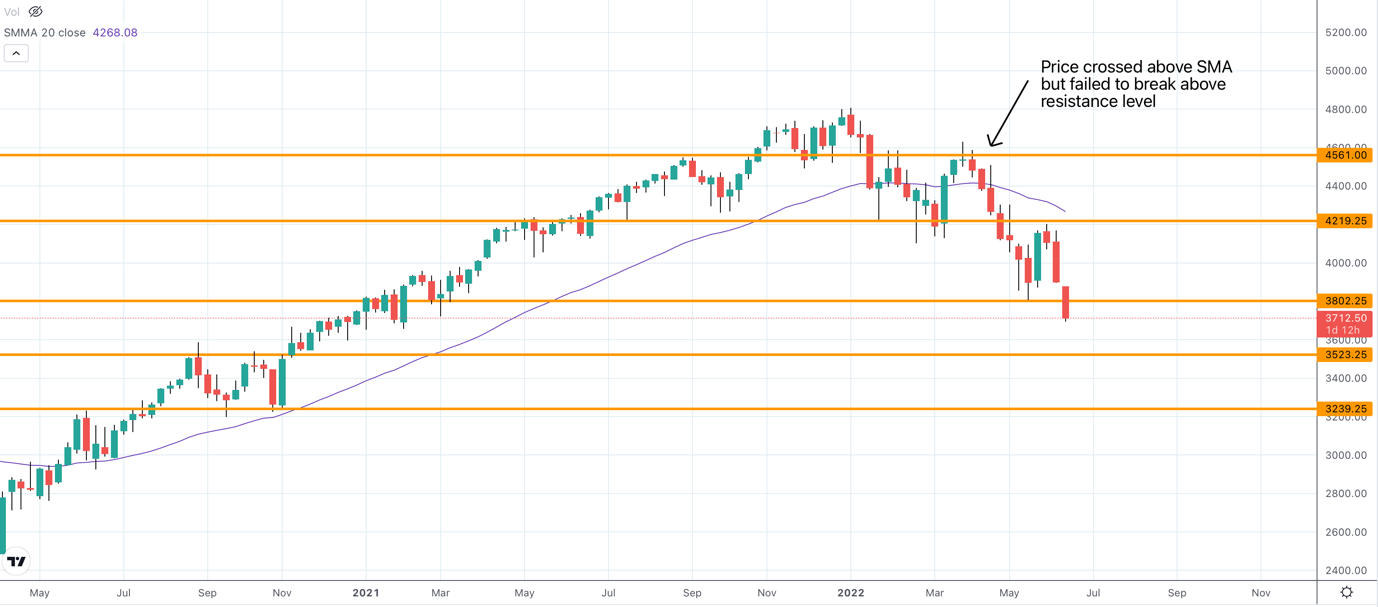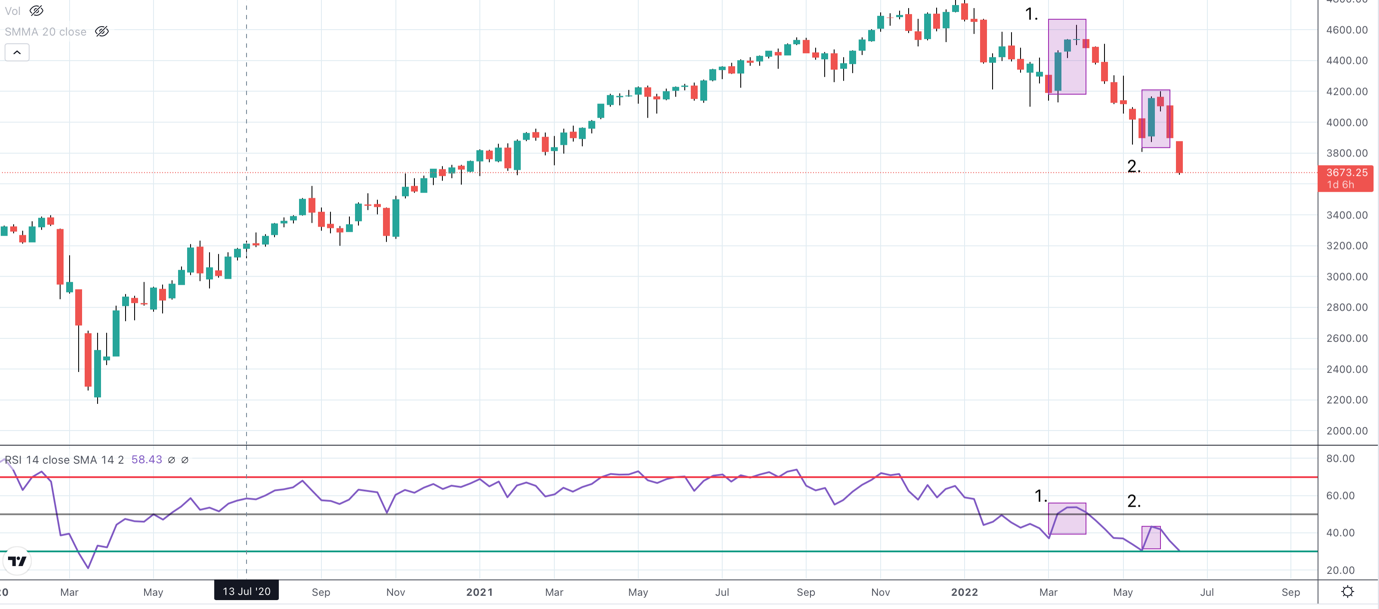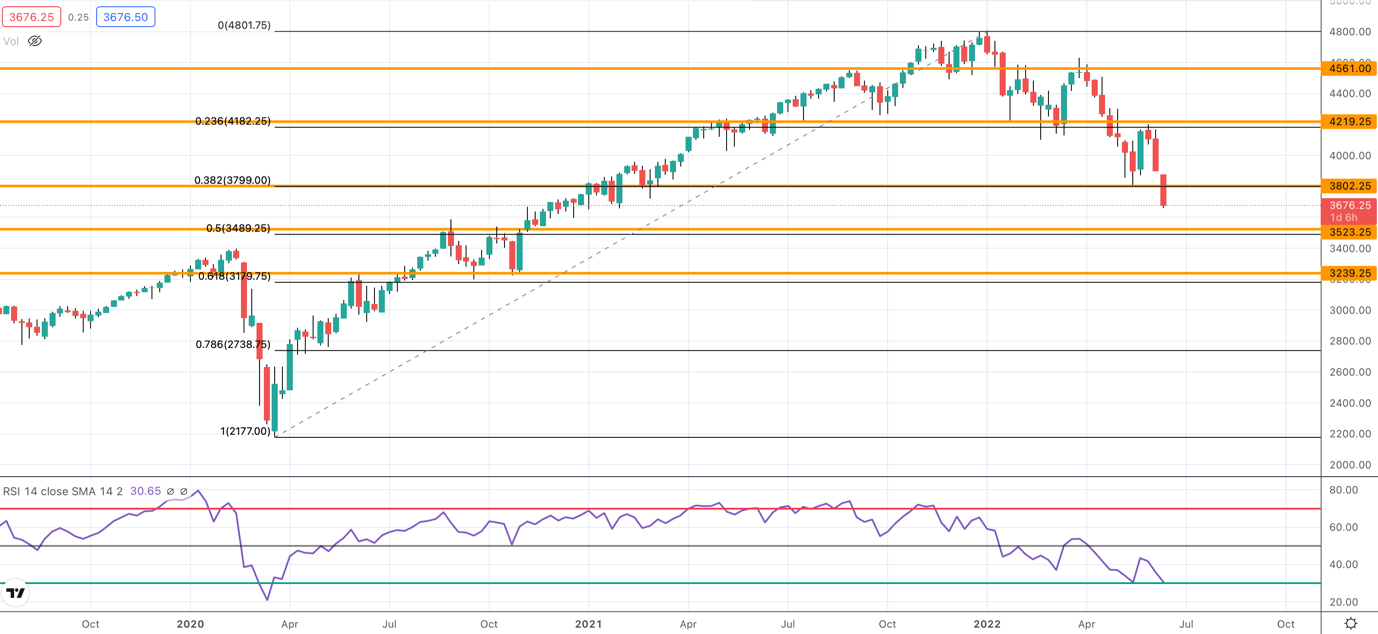The heavy sell-off in US stocks is one of 2022’s main trading themes. A bear market is rough when you own stocks but technical analysis strategies provide a way to look through the negative sentiment to find opportunities.
An increasingly hawkish Fed, global recessionary fears, and the ongoing impact of COVID-related disruptions and the Russia-Ukraine conflict are combing to weigh on risk sentiment. When the news is this relentlessly bad, technical analysis offers an alternative approach to see when the worst might be over.
Buying The Dip
Dip buying has long been a core strategy of stock traders; the simple premise being to buy at a discounted level when price is correcting from highs, anticipating a resumption of the bull trend. However, as with most things in life, timing is everything.
While the drivers behind any major shift in price action are always macro-related, when it comes to identifying buying opportunities during a market correction, technical analysis proves itself to be the better option time and time again. In this article, we’re going to take a look at three technical analysis strategies you can use to help you time your entry and know when to start possibly buying stocks again.
1) Support & Resistance Technical Strategy
The first strategy we’re going to consider is support and resistance (S&R). S&R is at the very heart of technical analysis. These levels help us map out where there has been strong demand (creating support) and strong supply (creating resistance) and therefore gives us price areas where we can anticipate further support and resistance. The basic use of these levels is to buy at support and sell at resistance, anticipating a price reaction.
How to Trade with Support & Resistance
During a market correction we can look to monitor key support levels as price tests them. If we see demand kicking in at support levels and price bouncing, this can be a good indication that the correction is stalling or even starting to reverse and therefore offers buying opportunities. More aggressive traders can look to trade from these support areas, anticipating the resumption of the bull trend. More conservative traders can wait for price to bounce off support and break back above a resistance level, confirming a shift in market structure.

Looking at the chart of the S&P we can see that price has been moving lower in a well-defined bear trend structure, making lower lows and lower highs. Despite bouncing firmly off the 3802.25 support, price failed to break back above 4219.25 resistance and the bear trend continued. So, as we head lower now traders need to monitor the next key support at the 3523.25 level. Aggressive bulls can look to trade a bounce here. However, unless we see a break back above the 3802.25 resistance (the last swing low) the medium-term view remains bearish. Once back above there, the focus is back on a move towards 4219.25. If we take out the last swing high in the bear structure this is a powerful sign the correction is likely over.
2) SMA Technical Strategy
The next technical analysis strategy we can use is Simple moving Averages (SMAs). SMAs are a great tool because they are wonderfully simple (pardon the pun). Essentially, the line tracks the average of price over the defined lookback period. So, for example, a 21 day SMA gives you the average price over the last 21 days. The basic premise is that if price is above the average, the market is bullish and if its below, its bearish.
How to Trade With the SMA?
Looking at the image above then, which shows the S&P chart with a 20-day SMA (one trading month) we can see that during the bull trend price remained mostly above the SMA. However, over the correction lower we have seen price trading below the SMA, reflecting the shift in sentiment. Bulls now need to see price back above the SMA to confirm a bullish shift. It is worth noting, however, that price action around the SMA can be volatile and we can see previously that price crossed back above the SMA before failing and reversing lower.

Combing Support & Resistance with SMA Trading
To make SMA trading more effective, it is better to combine it with other elements, such as support and resistance.

Looking at the SMA chart again, but this time with our support and resistance levels drawn in we can see that while the highlighted move did break above the SMA, price doesn’t close above the resistance level, so there would be no strong impetus for buying. So, looking ahead now, traders can wait for the S&P to break back above the SMA and back above the last resistance level in order to start buying stocks again.
3) RSI Technical Analysis Strategy
The final technical analysis strategy which can help us time our entry then, is using technical indicators. Oscillators in particular are great for this type of trading and one that works very well is the RSI indicator. The RSI indicator measures the strength of price moves over a recent range and tell us whether momentum is bearish (below the 50 level) or bullish (above the 50 level). It also determines whether price is oversold (the lower threshold at 30) and vulnerable to a reversal higher or overbought (the upper threshold at 70) and vulnerable to a reversal lower.
How To Trade With the RSI?
Now, the way that we can use this indicator to time our buying during a market correction is as follows: we wait for the RSI line to move down to the oversold threshold and then wait for it to move back above the 50 line, which is the neutral level, signalling that momentum has shifted back to being bullish.

Looking at the chart above with the RSI turned on we can see that during the second to last attempt at breaking higher, while the indicator line had been below 50 and then crossed back above, it hadn’t hit oversold levels first. Again, with the last attempt we can see that while the indicator hit the oversold levels, the subsequent move higher didn’t see the RSI breaking back above the 50 level. So, looking ahead then, we want to see the indicator crossing back above the 50 level from the current oversold levels, confirming a bullish shift, before we start buying.
Final Thoughts
Hopefully by now you have a clear understanding of how valuable these different technical analysis strategies can be in helping us time our buying during stock market corrections.
Additionally, we’ve highlighted some interesting levels and setups to watch in the S&P as we move forward. The main takeaway then is to watch how price interacts with the upcoming 3523 support level.
This also marks the 50% retracement of the rally from the 2020 lows and is a key support area to watch. If the market is going to bounce, this is likely to be the place where demand will return. If we take at the original chart once again with our support and resistance levels drawn in and the Fibonacci retracement from 2020 lows we can see that the 50% and the 3523.25 level line up very nicely creating a strong area of interest to monitor.






